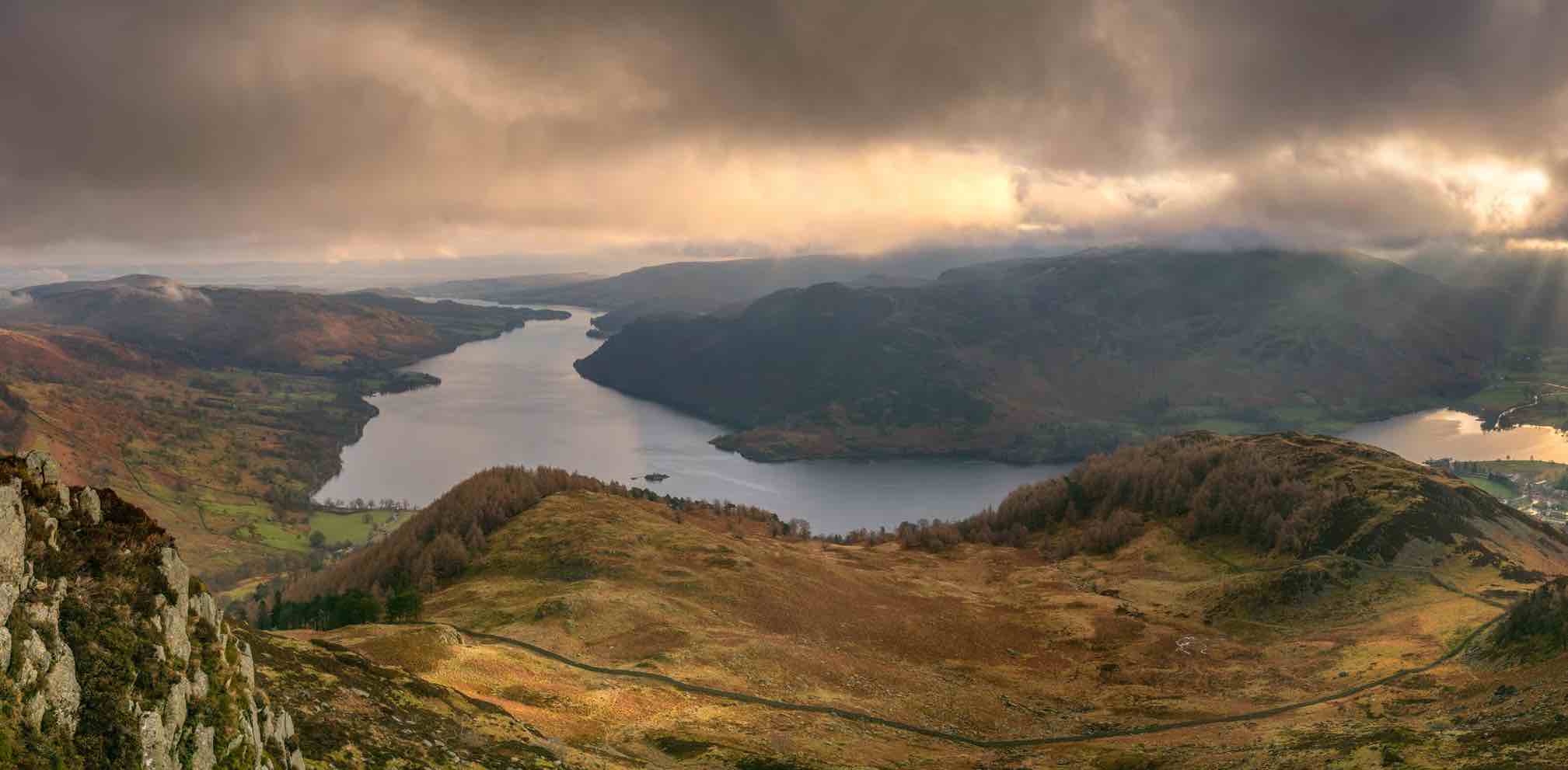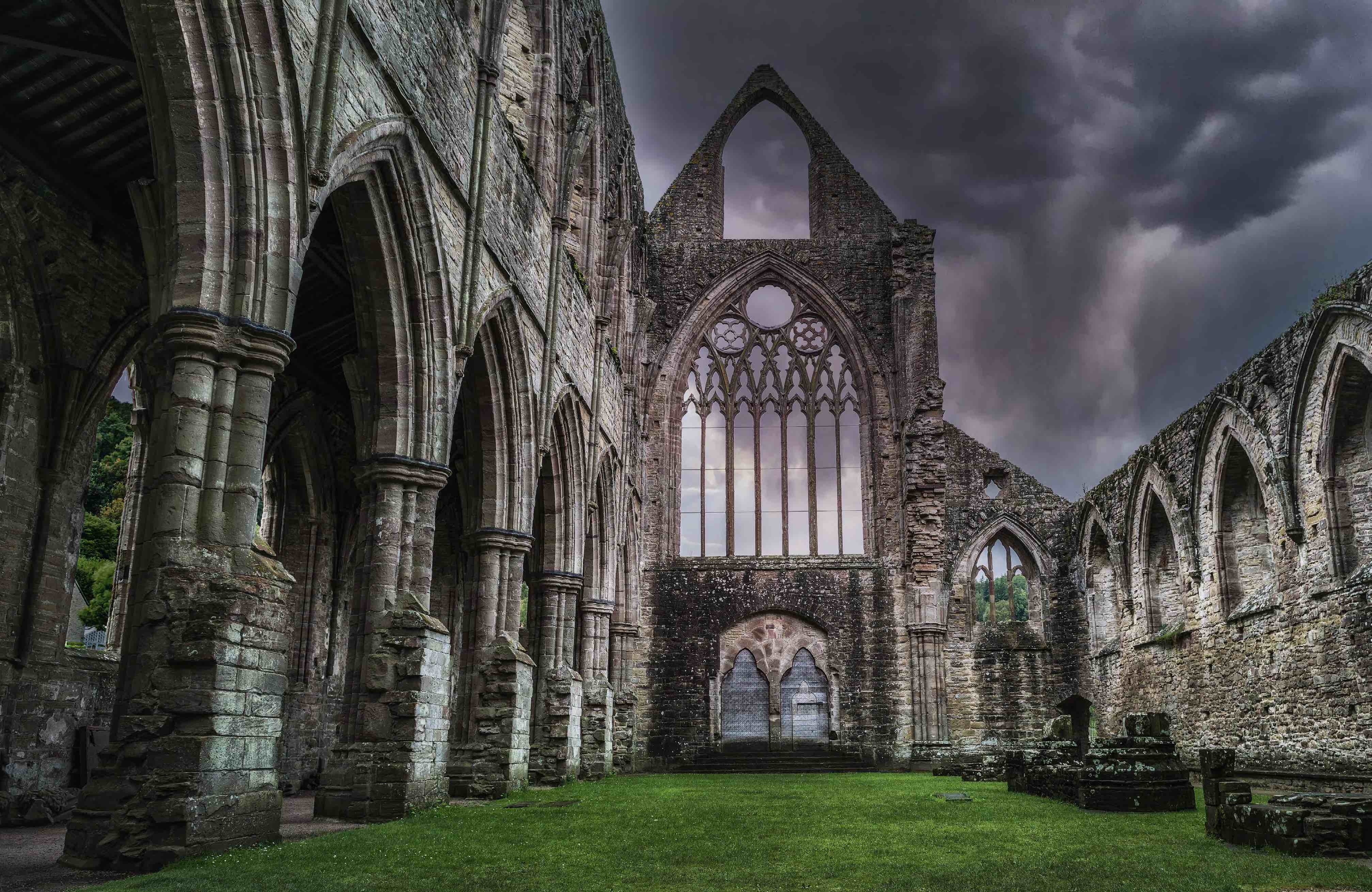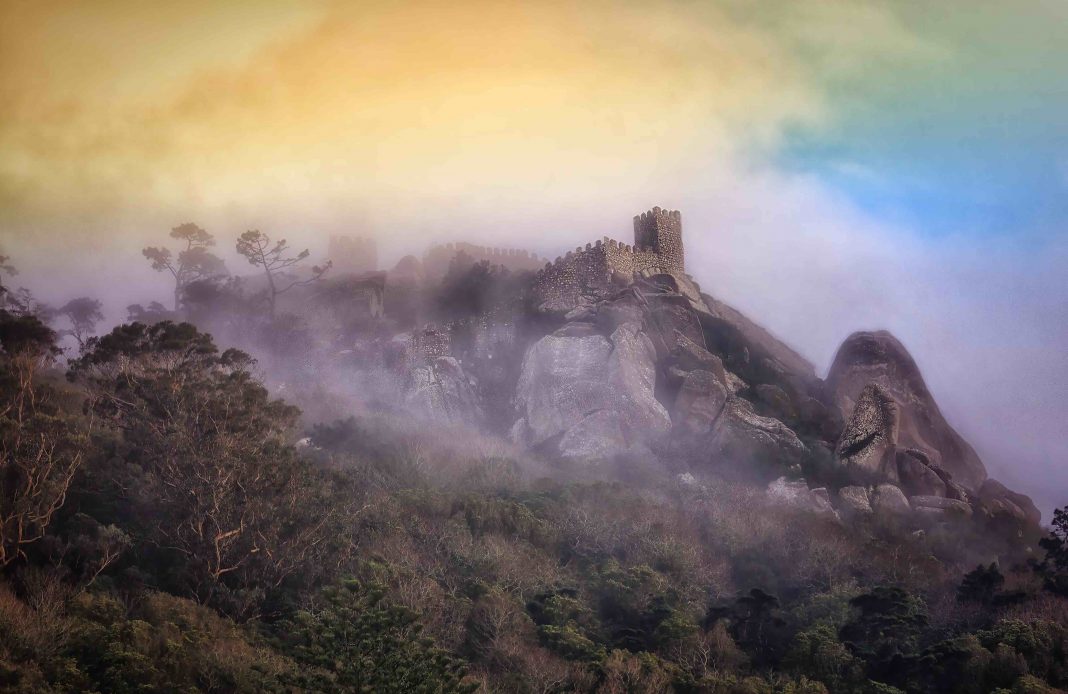Feature Image Photo by TAYLOR MOORE
If the central question of the Enlightenment was “How?” then the Romantics were distinguished by their “Why?”—their yearning to understand the self. In rebellion against the Age of Reason, the Romantics literally let their fancy roam, traveling the world in search of experiences that would inspire them.
Meditating in delight, wonderment, grief, or love, they connected with the natural world and themselves, most often through walking tours and mountaineering (which British Romantics pioneered). Mary and Percy Shelley published their History of a Six Week’s Tour about a trip through Western Europe; Dorothy Wordsworth’s Recollections of a Tour Made in Scotland documents her six weeks with William Wordsworth and Samuel Taylor Coleridge. Dorothy, William, and Coleridge also walked extensively together through the U.K. and Germany, John Keats walked through Scotland (ascending Ben Nevis). The route of Lord Byron’s Grand Tour and his swimming of the Hellespont are still practiced today.
At the risk of sounding cliché, we still use traveling as a vehicle to find ourselves, though an ascent of Helvellyn or a weekend in Rome feels different in 2020 than it must have in 1820. Still, as I followed along their pathways in my own recent travels, I could easily meet a Byron bedding countless men and women through Italy, or a Wordsworth taking meditative walks throughout the Lake District.
With modern travel, it’s easier than ever to roam where the Romantics did, occupy the spaces they had, or pay our respects at their final resting places. For the past few years, I’ve been doing just that, determined to understand the landscapes that ignited one of the most influential periods in literature.
This year, Covid-19 has left the future of travel uncertain, making it the perfect time to indulge in some armchair travel. Whether lockdown has kindled your dormant travel fire or broken your heart by keeping you housebound, I hope my Romantic pilgrimage inspires you to connect with yourself and the world around you.
Tintern Abbey
Wales
“Sorry we’re late; the damn engine caught fire!” That may have stopped a sane person from boarding the bus, but after walking halfway to Wales that morning, I was too excited to care.
With the River Wye as my constant companion, I traced the Welsh border south from Monmouth, enveloped by ancient trees and the smell of spring. The sliver of a road felt more and more like an afterthought—a symbolic gesture, rather than something that a bus should be driving on. All at once, the cavernous ruin of Tintern Abbey rose before me, with as much weight and enchantment as it had for Dorothy and William Wordsworth over two centuries ago.
It wasn’t always a ruin, of course. Before falling into decay, the abbey was occupied from the 12th to the 16th century. What remains is a marvel of engineering that inspires a deep sense of reverence. I pause to imagine the abbey at its height: the intricate stained glass, solemn chanting pulsing through the nave, incense thick in the air. I wandered over wet grass, neck craned, arms outstretched, tracing my fingertips over the heavy stones.
Wordsworth’s best poems encourage us to know ourselves, which he did by connecting with nature. In “Lines Composed a Few Miles Above Tintern Abbey,” he debates memory, reflecting on the man he was five years prior and the memories he’d made which sustained him in that time. Returning to the abbey, this time with Dorothy, he addresses his younger self and his “dear, dear friend,” his muse, confidant, and biggest supporter. This left such an impression on Dorothy that, almost three decades later, she alludes to the memory in her poem “Thoughts on My Sick Bed.”
It’s been five years since I visited Tintern Abbey, and to those memories, I have owed “in hours of weariness sensations sweet.” Yet, as Wordsworth did, I wish I could visit again with my best friend, my own sister. We’d cross the Wye to the Devil’s Pulpit and together ascend through a wooded copse. The damp leaves would give way underfoot until we’d pass through a clearing and drink in the quiet river and abbey below.
Gasmere
Lake District. Cumbria
When Coleridge and the Wordsworths made their home in the Lakes, the area was undergoing increasing industrialization and displacement of people. Lyrical Ballads was an experiment by Coleridge and Wordsworth to write in an accessible way for the masses about subjects that would be meaningful and relatable to them.
My first stop is Dove Cottage, accessible only by guided tour. After knocking my head on a doorframe, I realize it’s an appropriately diminutive name. Following their mother’s death, William had studied at Cambridge and traveled extensively, while Dorothy lived as an orphan, bouncing between relatives for twenty years. The cottage was Dorothy’s first real home, and as I squeeze through each room, I can feel her touch in their trinkets and decorations, the comfort and love between the walls.
Afterwards, I visit the museum, a two-story barn conversion. Inside, I find Coleridge’s death mask, a collection of early manuscripts from the Lake poets, and a few personal items. My last stop in town is St. Oswald’s Church. Down a path flanked with daffodils, you’ll find the Wordsworths’ plot. Unfortunately, it doesn’t have the quietude I was expecting. Busloads of tourists are dropped in the town center to amble around, as the church is right on the main road.
To escape the crowds, I decided to hike Loughrigg Fell, a favorite of the poets, offering a dramatic view across the Lakes. In their walks covering vast distances, Coleridge and the Wordsworths would discuss all manner of topics and compose their poetry. In fact, while walking, William is said to have committed entire poems to memory, only writing them when back home.
On my descent from Loughrigg, I breathed deeply of the expanse of greenery that fell away before me. There wasn’t a living soul for miles. Further down, I found shelter from the incessant wind among the branches of a forgotten tree. Resting under the wide sky, I understood why our poets cherished these hills as a place for contemplation.

Keats House
Hamstead, London
Past the row of trendy brunch spots and artisanal bakeries in Hampstead Heath, I find what was once Wentworth Place, now “Keats House.” Here, Keats wrote his most enduring poetry, contracted the tuberculosis that would claim his life, and met Fanny Brawne, the woman who set his heart on fire.
Wandering through the rooms where he composed “Lamia,” “Hyperion,” and his odes felt surreal. I was immersed in his memory. An original manuscript of “On First Looking Into Chapman’s Homer” hangs on the wall. I press my nose as close as it goes, studying the handwriting. In a portrait above the mantel, Keats dreamily reads on a chair by the window. I look down to see the chair in front of me.
We don’t remember Keats as a boxer, swimmer, or womanizer like Byron, nor a theologian or essayist like Coleridge. The widely known image is the waifish, melancholic poet reading by the window, pining after Fanny and tragically wasting away from the shock of poor reviews.
My visit lifted the veil on that image. In letters from Charles Cowden Clarke and Edward Holmes, I meet the physically powerful, passionate, often boisterous poet. Keats’s first love was fighting. His friends had him picked for a soldier—a robust, fearless young man. That’s why his friends didn’t believe him tubercular.
Downstairs, I swore I saw Fanny outside the window, carelessly reading under the tree. I watch her from the sofa, as he would have, unable to join as he grew weaker and weaker from his illness. For a time, Fanny nursed Keats. Before his departure for Italy, they exchanged locks of hair. She lined his traveling hat with silk and gave him her white cornelian, a stone he kept on him continually.
Now in the garden, I survey the home. Here, where he composed his best poetry, I got to know the more authentic side of the man. It felt intimate. I left as a close friend of his, grateful to have met the real Keats.
Keats-Shelley Memorial House
Rome
The Spanish Steps and I bake under the summer sun as I press through tourists posing for photos and hawkers selling roses. The heat is intolerable, so I slip into the unassuming house next door. It is the house Keats died in and which now stands as a shrine to the Romantics.
The house was bought by the Keats-Shelley Memorial Association in 1906. Now it houses more than 8,000 books of Romantic literature—the largest collection in the world.
When I first enter, it feels suffocating. The air is musty, perhaps leftover from the former inhabitants. Eventually, the sensation abates, and I’m left in stillness to pore over every wooden bookshelf and aged letter in the room.
I start against the window, with the traveling desk which an eighteen-year-old Mary Shelley might’ve used to write Frankenstein, the book that would inspire a generation of Gothic literature and give birth to the science fiction genre. Behind glass, I marvel at how well-preserved the locks of Keats’s and Shelley’s hair are. Looming atop a bookcase like Poe’s raven are busts of Shelley and Keats. On the walls, Keats’s death mask, Byron’s Carnival mask, countless portraits, poems, manuscripts, and an urn containing part of Percy Shelley’s jawbone. It borders on obsessive. Luckily, I am a little obsessed.
In the adjoining room, I see where Joseph Severn nursed Keats in the terminal stages of his illness. On the wall opposite the bed, a heartbreaking letter from Severn about Keats’s last night on Earth reads, “I am broken down beyond my strength. I cannot be left alone.” After Keats’s death, Fanny Brawne carried on a mail correspondence with Keats’s sister Frances. Each understood the other’s grief and loss in a way no one else could. While we get to know Keats through his letter to Fanny, we get to know Fanny through her letters to Frances. (None of Fanny’s letters to Keats survive.)
Another couple wait impatiently behind me, and I awkwardly shuffle past them into the space at the foot of the bed. I watch the world out the window as Keats had. I remember that one of the houses on this block is where Byron began writing Canto IV of Childe Harold’s Pilgrimage in 1817.
The room fills up. I decide it’s time to rejoin the real world and its blistering heat. I commit every uneven floorboard to memory and draw in a final, deep breath of the place.

The Non-Catholic Cemetery
Rome
“Go thou to Rome—at once the Paradise, the grave, the city, and the wilderness,” writes Shelley in “Adonais,” his elegy for the departed Keats. Not long after Shelley published “Adonais,” he drowned (under mysterious circumstances) in Italy. A copy of Keats’s poetry was found on his body, and now they’re both interred in the same cemetery.
For fans of the Romantics, Rome is an Elysium, and “the holiest place in Rome” (as Oscar Wilde put it) is the Non-Catholic Cemetery. It combines my love of poets, cemeteries, and cats in one utterly spellbinding locale.
A pebbled walkway leads through a mess of low-hanging branches, and I emerge into another world. The towering Pyramid of Cestus casts its shadow over the clearing. The feline residents, or i gatti della piramide (the cats of the pyramid) roam the grounds.
Among ancient trees and flowers in bloom, I spy an old friend. I sit on the bench opposite Keats’s grave for some time, just listening. It’s a place of solemn remembrance, for contemplation. Keats requested a nameless, dateless tombstone; he wanted only the words “Here lies one whose name was writ in water” inscribed there. Severn couldn’t bring himself to do it. Instead he and Charles Armitage Brown immortalized on the stone that a poor review of “Endymion” led to his death.
After a time, I trot over to check in with Shelley. Hard against the crumbling wall, a heavy marble slab conceals his ashes. It bears an inscription from The Tempest. The sad, solemn scene of Shelley’s beach cremation springs to mind. Legend has it, Percy’s heart wouldn’t burn in the pyre, and Mary kept it wrapped first in a scarf, then in the pages of “Adonais.” It was Mary’s determination that ensured Percy’s poetry was published posthumously, and thanks to her journals, we have an insight into both their lives.
As I turn to leave, a cat rubs itself against my leg. I can’t help but smile. I can see Keats and Shelley here, in life. By day, Keats would compose lines in the grass, taking in the birdsong and feeding the cats. At dusk, Shelley would muse on theology, hunt for supernatural friends, and admire the faded grandeur of the Pyramid of Cestus.
Sintra
Portugal
In a letter to his mother in 1809, Lord Byron described a “glorious Eden” he had come upon on his Grand Tour of Europe: “The village of Cintra, about fifteen miles from the capital, is perhaps in every respect, the most delightful in Europe; it contains beauties of every description, natural and artificial. Palaces and gardens rising in the midst of rocks, cataracts, and precipices; convents on stupendous heights—a distant view of the sea and the Tagus.”
For wealthy young men at the time, the Grand Tour was considered a rite of passage. It was meant to give young nobles an appreciation of art, literature, and foreign culture. Byron’s tour is detailed in Childe Harold’s Pilgrimage, the poem that made him famous. This was not merely a matter of the writing but of strategy: He was the first poet to create avatars of himself in his poetry and to include his portrait in books.
There are still palaces, gardens, and densely forested woodlands in Sintra, but it has changed significantly since our poets traveled there, unlike the other stops on my pilgrimage. Construction on perhaps the most recognizable Sintra landmark now—the colorful Pena Palace—was not begun until thirty years after Byron visited.
Similarly, the Quinta de Regaleira, the mysterious, Gothic mansion filled with follies and grottos, and steeped in occult symbolism, was built in the 20th century. Despite what’s changed, I found my inspiration here. For me, it was the sprawling, tropical gardens of the Pena Palace, descending the intricately carved stairs of the Quinta de Regaleira’s Initiation Well, and the thickly wooded forest.
Byron was right; Sintra feels entirely enchanting. Except the main town. I’m the first to say it’s a tourist trap. Through its maze of streets, I must pass through the very bowels of Sintra, tracing my way through a tangled mess of cobblestones and cork souvenirs. But when I ascend the Alto Cruze (High Cross), the entire forest shrinks beneath me and the Pena Palace appears as a doll’s house left in the garden. Up here, the town fades away, and I’m left with the Romantic image of it that Byron has painted.
Read more about Phillip Kapeleris’s adventures at phillipkapeleris.com.

































